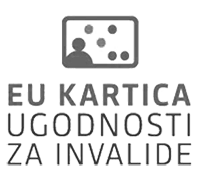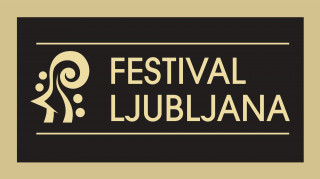Important information
Opening of the exhibition Klavdij Palčič
A DUALITY WRITTEN FOR ETERNITY
The path followed by the Triestine painter Klavdij Palčič has for decades been an eloquently convincing one: it moves between pure art and metaphor in an unusually effective blend of different artistic techniques and shocking combinations, shifting boldly but reflectively between gloom and vividness, restraint and release. This is a path of passion and love that enlivens distinctively recognisable artistic narratives that touch upon each other, provocative, sensuously aesthetic, opening up, in colourfully glowing experiences, a whole palette of mental and emotional responses. The narratives of an artist from the edge of Slovene ethnic territory, between the Mediterranean and the North, between the Karst and the sea.
In the early 1960s, as one of the more prominent members of the Trieste art group Raccordosei–Arte Viva, he dedicated himself with great creative restlessness to the very latest forms of artistic exploration, testing himself with artistic irruptions into space, with combinations of different colours, unusual shapes and modern materials. He discovered the line and the colour-filled record left by the hand in the visual field, and addressed three-dimensionality in painting. Even then he was seeking the point of contact between sculpture and painting, between drawing, sculpture and painting, establishing an alternative dialogue between material, form and colour, and discovering singularity in the expression of content. The 1960s represent his entry into the Slovene and Italian art spheres and his discovery of new materials and a wide range of expressive possibilities: this is the decade of brown, yellow-gold and black sensations, reinforced canvases, combinations of canvas, sheet metal and paint, the discovery of canvas and paper, experiments and verifications. The 1970s confirmed him in the originality of his combinations of wood, polyester, metals, lacquers, resins, plastic pipes, cushions and fragments of the organic world, which in their relief-like character fostered hapticity and the sense of a spatial dimension. They allowed him to use the most commonplace items from everyday life. These retained a recognisable origin and an interdependence with the user: with the human being. As a result, these abstract compositions of different materials – in which the decisive role was played by shape and colour, the latter framed in the symbiosis of white and black – saw the gradual but increasingly forceful appearance of the human figure. Its fragments. Drawing appears and colour starts to glow, giving the painting a new dimension. The artist’s relationship with the world opens itself to new gazes, experiences and beliefs and to new artistic techniques. Drawing, the object and painting are joined by printmaking and illustration. He increasingly uses canvas in his artistic experimentation but from the end of the 1970s until the mid-1980s, with a remarkable creative charge, he increasingly prefers to surrender to the creative possibilities of paper and to assuage his violent desire to tear, to stick, to assemble, to have a direct contact with the artistic object in three dimensions and to realise shifts in content, form and style. Paper means much more to him than a mere background on which to record a fleeting impression, a mental illumination, a sketch or a croquis. He revives printmaking techniques and conjures up drawings and illustrations: black and white, created with Indian ink, marker, pencil, charcoal or even printer’s ink; or colour, when enlivening his stories with pastels or chalk.
In the 1980s the expressively accentuated figure enters his abstract world and reveals to him the decades-long journey along the subtle edge of sense perceptions and expressive visions: with the richness of his expressive power, his allusion becomes increasingly recognisable. With the appearance of colour and human and animal figures – drawing on, among other things, Greek mythology, which will become an important starting point in his later work – and with the striking and suggested symbiosis of abstraction and figuration, his most important period now begins. Enriched by experience and knowledge, he listens more freely to himself, to his inner voice, which with increasing insistence begins to demand a more profound response. A visualisation of the world that he experiences and accepts in an entirely different way. From now on figural art will feature in his creative ambitions: human figures, parts of the human body, birds, Icarus or trees, treetops, mythological creatures, equally important and decisive. Even more. A figurative starting point that offers a whole range of starting points for form and content expresses itself, in this new period, even more nobly and genuinely, even more shockingly and dramatically in its dual vision: in abstraction and figurativeness. Through colour and drawing. The figure remains expressive but also becomes increasingly symbolic. Blurred in his virtuosic use of drawing yet still sufficiently recognisable. But when the artist opts for photographic application as an antipode, as a factual mirror image, the figure is also realistic. And it can also be expressionistic, when it addresses dramatic feelings – irony, sarcasm – with greater intensity. Typically, the figure, its detail, its extremities remain trapped for decades in a drawing, most often black, sometimes also white, floating in the non-finite against a light, white, grey-white, brown, murky, black or even vividly glowing blue, green and ochre background.
Floating or almost flying, timeless and expressively eloquent, caught between symbol and metaphor as the centre of attention, the figure undulates the visual field and, in its dynamic position as the main narrative support, continues to attract, right up to the present day, with its airiness and careful concentration of colour accents. The metaphor of the seen and the felt is caught in many paintings on the canvas, on the paper, on cardboard, in clay, in bronze. Hands that create new fantasy worlds, worlds of new horizons, new mythologies, that extend between heaven and earth, that seek new routes. Every new work reveals the artist’s face: a face turned to itself, to the depths of a soul that seeks consolation in artistic adventure. By walking along the edge of infinite creative freedom, between illusion and imagination, he peels off creative layers that give birth to new works like landscapes of the artist’s being, like reflection of ties to tradition and the search the new post-modern mythologies. Like a walk between the real and the virtual, between the monochrome and the chromatic. Between reason and emotion. In a rich iconography, in a sumptuous understanding of space and time. In a dialogue of duality enriched by originality and directness, boldness and calm, and the harmony of form and content, line and colour, material and structure, the figure as a metaphor of the seen and the felt, the harmony of abstraction and the figural, a floating figure between symbol and metaphor. In a dialogue that places Palčič’s works among the best of our age.
Nelida Nemec



